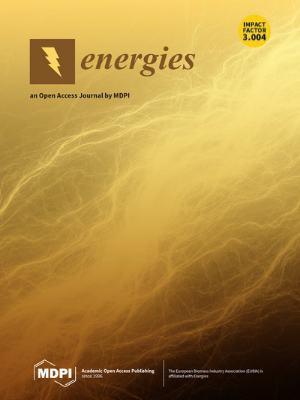评估低压配电网络中光伏发电和电动汽车充电的综合普及率:马耳他案例研究
IF 3.2
4区 工程技术
Q3 ENERGY & FUELS
引用次数: 0
摘要
光伏(PV)和电动汽车(EV)充电的高渗透率会导致电压变化和馈线过载,从而对电网低压配电网的稳定性构成挑战。本研究论文以马耳他具有代表性的低压配电网为案例,探讨了低压配电网中光伏与电动汽车(EV)充电相结合的潜力。欧盟(EU)制定的目标和指导方针表明,分布式网络(DN)很有可能包含大量光伏系统(PV),从而导致过电压,以及大量电动汽车(EV),它们可能以不稳定的方式充电,从而导致欠压和过载事件。由于光伏(PV)发电和电动汽车(EV)充电同时发生,配电网络(DN)可能会同时出现不利情况,尤其是在住宅案例研究中。有效采用分散式或集中式储能是解决这些问题的可行方法。不过,这种策略可能会推迟昂贵的 DN 投资。该研究展示了马耳他城市地区实现的自动缓解程度。所提供的数据主要包括在低压馈线起始点获得的经验测量值。本文章由计算机程序翻译,如有差异,请以英文原文为准。
Assessing Combined High Photovoltaic and Electric Vehicle Charging Penetration in Low-Voltage Distribution Networks: A Case Study in Malta
High Photovoltaic (PV) and Electric Vehicle (EV) Charging Penetration challenges the grid’s Low-Voltage (LV) Distribution Network’s stability due to voltage variations and the overloading of feeders. This research paper investigates the potential of combined PV and Electric Vehicle (EV) charging integration within LV DN, using a representative DN in Malta as a case study. The European Union (EU) has set forth objectives and guidelines that suggest a high likelihood of Distributed Networks (DNs) incorporating a significant number of Photovoltaic Systems (PVs), resulting in overvoltage occurrences, as well as a substantial number of Electric Vehicles (EVs), which may charge in an erratic manner, leading to undervoltage and overloading events. A distribution network (DN) may experience unfavorable situations concurrently due to the simultaneous occurrence of photovoltaic (PV) generation and electric vehicle (EV) charging, particularly in residential case studies. Effectively employing either dispersed or centralized storage is a viable approach to tackle these issues. However, this strategy may defer the requirement for expensive DN investments. The study showcases the extent of automated mitigation attained in the urban zones of Malta. The data presented primarily comprises empirical measurements obtained at the onset of the LV feeder.
求助全文
通过发布文献求助,成功后即可免费获取论文全文。
去求助
来源期刊

Energies
ENERGY & FUELS-
CiteScore
6.20
自引率
21.90%
发文量
8045
审稿时长
1.9 months
期刊介绍:
Energies (ISSN 1996-1073) is an open access journal of related scientific research, technology development and policy and management studies. It publishes reviews, regular research papers, and communications. Our aim is to encourage scientists to publish their experimental and theoretical results in as much detail as possible. There is no restriction on the length of the papers. The full experimental details must be provided so that the results can be reproduced.
 求助内容:
求助内容: 应助结果提醒方式:
应助结果提醒方式:


